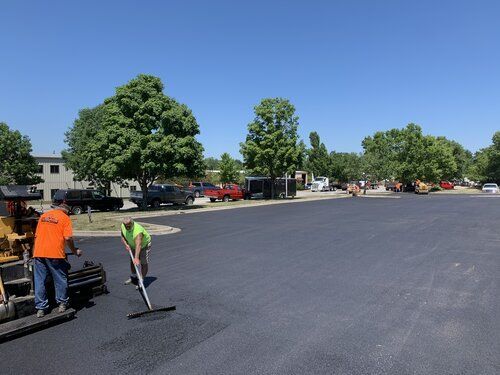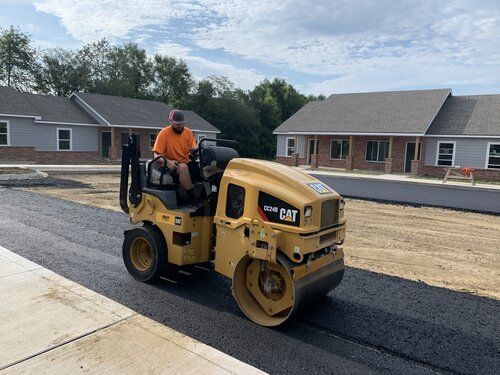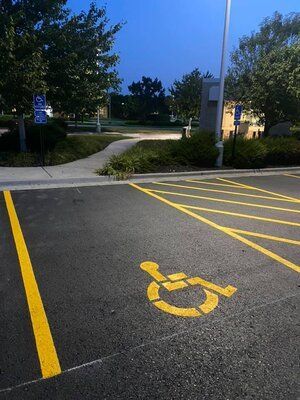Introduction
Parking lot line striping might seem like a straightforward task, but it encompasses more than just painting lines on asphalt. It plays a critical role in ensuring safety, enhancing aesthetics, and maximizing space efficiency. For beginners venturing into the world of parking lot maintenance or facility management, understanding the nuances of parking lot line striping is essential.
In this article, we'll delve deep into every aspect of parking lot line striping. From the importance of proper layout design to understanding materials and techniques used by asphalt companies, we aim to equip you with the knowledge needed to make informed decisions for your paving and marking needs.
A Beginner's Guide to Parking Lot Line Striping
Understanding Parking Lot Line Striping
Parking lot line striping is the process of applying paint or thermoplastic materials onto an asphalt surface to create clear markings for vehicle guidance. The lines indicate parking spaces, directional flow, pedestrian crossings, and other essential features within a parking facility.
The Importance of Proper Line Striping
Proper line striping improves safety by guiding vehicles and pedestrians. It can also enhance the visual appeal of your parking area and reflect well on your business’s image. Neglecting this crucial maintenance step can lead to confusion, accidents, and even liability issues.
Key Components of Parking Lot Striping
Understanding what goes into effective parking lot striping involves several critical components:
Materials Used for Striping- Paint Thermoplastic Epoxy
- Striping machines Stencils Measuring tools
- Space optimization ADA compliance Local zoning regulations
- Temperature considerations Dry time factors Safety precautions during application
Choosing the Right Asphalt Company for Your Needs
When considering asphalt paving services, selecting the right contractor is vital. Here are some factors to consider:


Reputation and Experience
Look for asphalt paving contractors with a solid reputation in your community. Reviews and testimonials can provide insight into their reliability.
Licensing and Insurance
Ensure that any potential contractor is properly licensed and insured. This protects you from liabilities in case of accidents during the project.
Cost Estimates
Get detailed cost estimates from multiple driveway paving companies before making a decision. This will help you understand asphalt paving cost per square foot and avoid hidden charges later on.
Cost Breakdown: Understanding Asphalt Paving Cost
While many factors influence asphalt paving costs, let's break down some common elements:
| Item | Estimated Cost Range | |------------------------------|---------------------------| | Initial Site Assessment | $200-$500 | | Asphalt Material | $1-$3 per square foot | | Labor | $0.50-$2 per square foot | | Additional Services (Sealcoating) | $0.15-$0.30 per square foot |
Common Parking Lot Markings Explained
Parking lots require various types of markings beyond simple lines:
Standard Parking Spaces
These are typically 9 feet wide by 18 feet long but may vary based on local regulations.
Handicap Spaces (ADA Compliant)
These spaces must adhere to specific dimensions defined by the Americans with Disabilities Act (ADA), which are usually wider than standard spaces.

Directional Arrows
These markings guide drivers through one-way lanes or indicate the direction for entry/exit points.
Custom Numbering & Lettering
Some businesses opt for custom markings to identify specific areas within their lots or designate reserved spots.
Importance of ADA-Compliant Parking Lot Striping
Ensuring that your parking lot meets ADA standards isn’t just about compliance; it’s about providing access to everyone. ADA-compliant parking lot striping includes specific dimensions for handicap spaces as well as appropriate signage indicating accessibility features.
Preparing Your Asphalt for Line Striping
Before applying new stripes, it's crucial to prepare your asphalt correctly:
Cleaning: Remove dirt, debris, oil stains, or existing old paint. Repair: Address cracks or potholes through methods such as asphalt crack sealing or asphalt patching. Sealcoating: Consider sealcoating your driveway prior to striping for added protection against wear and tear. sealcoatingBenefits of Sealcoating Your Asphalt Driveway
Sealcoating offers numerous advantages for maintaining your asphalt surfaces:
- Protects against UV rays. Prevents moisture penetration. Extends lifespan through regular maintenance. Improves appearance with a fresh black finish.
How Often Should You Sealcoat?
For high-traffic areas like commercial parking lots, sealcoating every 1-3 years is recommended depending on wear conditions.
FAQs About Parking Lot Line Striping
1. What kind of paint is best for parking lot striping?
The best paint depends on your budget and desired longevity; however, high-durability traffic paints are often preferred due to their resistance to weather conditions.
2. How long does it take for stripe paint to dry?
Typically, it takes between 30 minutes to an hour for paint to dry enough for light traffic but fully cures in about 24 hours under optimal conditions.
3. Can I DIY my own parking lot line striping?
While DIY is possible using stencils and spray paint, hiring professionals ensures precision and adherence to local regulations.
4. How often should I restripe a faded parking lot?
Typically every 1-3 years depending on traffic levels; however, if visibility diminishes significantly before then, consider restriping sooner.
5. What are thermoplastic markings?
Thermoplastic markings are durable lines created from heated plastic material that bonds strongly with asphalt surfaces offering longevity over traditional paints.
6. What is involved in "parking lot restriping"?
This process entails removing old stripes (if necessary) followed by reapplying new markings according to updated designs or regulations ensuring safety compliance.
Conclusion
In conclusion, understanding parking lot line striping encompasses various elements from initial planning through execution and maintenance stages—including knowing when it's time for repairs or restriping efforts based on wear patterns over time—all while ensuring regulatory compliance! By following this guide closely—whether you're managing residential driveways or overseeing commercial properties—you're now equipped with essential insights that can dramatically improve not just safety but also efficiency within these crucial spaces!
If you're considering diving deeper into specific topics such as asphalt driveway installation, sealcoating cost, or even how often you should perform routine maintenance checks—don't hesitate! There's plenty more information out there waiting just beyond these words ready at your fingertips!